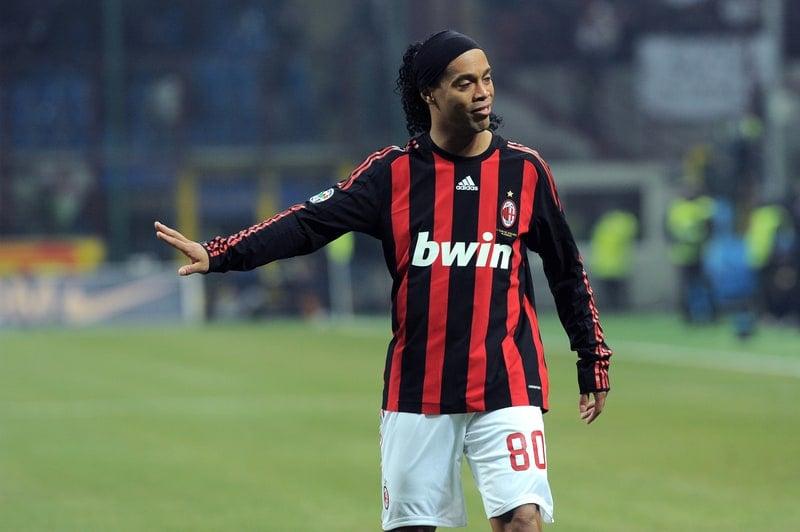Manchester City manager Pep Guardiola once famously said that formations are just “phone numbers.” While he believes that his players’ fluid movement renders the initial formation irrelevant, for the average fan, formations provide a valuable framework to understand a team’s playing style. In this article, we dive into the most popular football formations, exploring their strengths, weaknesses, and the reasons behind managers’ preferences.
Bạn đang xem: Football Formations: Unlocking the Tactics Behind the Game
The 4-3-3 Formation
Strengths
The 4-3-3 formation’s key advantage lies in the presence of a third player in central midfield. This numerical overload helps with build-up play, creating passing lanes and dominating possession. The triangular structure it creates facilitates a possession-based style, as demonstrated by Johan Cruyff’s teams and Zinedine Zidane’s Real Madrid.
In attack, wide wingers flanking a single center-forward can pin back four defenders, generating overloads on the pitch and facilitating progression.
Defensively, the 4-3-3 provides compactness and numbers in central areas, making it easier to defend the space between the defensive and midfield lines. Pressing high up the pitch is also more achievable with three players in the front line.
Weaknesses
The main weakness of the 4-3-3 is the potential isolation of the single center-forward. They often find themselves underloaded when facing two or three center-backs. This requires a selfless and skilled player capable of holding off multiple defenders.
The central midfielders can also be numerically overloaded against formations like the 4-4-2 diamond, leaving them with a lot of ground to cover. Failure to track back following a switch of play can expose the full-backs, particularly if they push up the pitch.
The 4-4-2 Formation
Strengths
The 4-4-2 formation offers the advantage of two center-forwards to occupy the opposition’s center-backs. This constant occupation creates a strong base for launching counter-attacks and maintaining a balance of players around the ball.
Dropping back into a block, the front two can block access to central midfield, making it harder for opponents to build through the center of the pitch.
Sliding across the pitch in two units of four is relatively easy, allowing the team to maintain compactness and defensive solidity.
Weaknesses
The 4-4-2 requires substantial work, movement, and runs from players. Its rigid structure can hinder teammates’ passing options, particularly in the forward areas. Without fluid movements, the predictability of this formation increases.
With two flat lines of four and little depth in midfield, it becomes challenging to cover the spaces between the lines. A single penetrative pass can isolate several players. Additionally, the central midfield duo often faces a numerical overload against opponents utilizing a midfield three.
The 4-2-3-1 Formation
Strengths
The 4-2-3-1 formation benefits from the number 10’s ability to drop into midfield during possession. This creates numerical overloads in central midfield, aiding build-up play, chance creation, and domination of possession. The freedom to find spaces between the lines and away from pressure adds another dimension to the team’s attack.
The defensive stability provided by a double pivot allows full-backs to push forward effectively. The defensive midfielders protect the spaces ahead of the center-backs, facilitating quick coverage of wide areas and switches of play.
Weaknesses
Using a double pivot sacrifices one attacking player, potentially leading to a lack of central attacking presence. When the ball moves forward, the team may struggle to support the attack effectively.
The three central midfielders can be overloaded by formations like the 4-4-2 diamond, especially if the number 10 fails to drop back during defensive phases. The wide areas can also be left exposed to counter-attacks, given the potential difficulty in covering ground quickly.
The 4-4-2 Diamond Formation
Strengths
The midfield diamond formation provides a crucial numerical advantage in central midfield. It allows the team to overwhelm opponents in this critical part of the pitch. Against a back three, the midfield diamond will rarely face a numerical disadvantage in central midfield.
The formation’s structure also enables two center-forwards to constantly engage both center-backs in a back four. This keeps the opposition defense occupied and helps create space for other players.
Defensively, the diamond shape facilitates defending spaces between the lines and provides ample cover in central areas. The front two can block central access or press the opposition center-backs, forcing play into a congested central midfield.
When defending for prolonged periods, a mobile midfield diamond can effectively restrict play near the touchline.
Weaknesses
The 4-4-2 diamond can suffer from a lack of width in attack if the full-backs do not push forward during possession. This limitation can make the team predictable and easier to defend against.
In the defensive phase, the wide areas become potential targets for opposition counter-attacks. Accurate switches of play can isolate the full-backs, requiring rapid movement from the nearest central midfielder to provide support.
The 3-5-2 Formation
Strengths
The 3-5-2 formation’s midfield unit of five provides width and numerical superiority in central midfield. The central midfielders can draw opponents into the middle of the pitch before spreading play wide to the wing-backs. This dual-width approach presents an attacking threat and allows for effective progression.
The presence of two center-forwards keeps the opposing center-backs occupied, creating space for high wing-backs and additional attacking midfielders. This formation offers depth and a strong attacking presence in the final third.
Xem thêm : The Art of Refereeing: A Insight into the World of Soccer Officials
Defensively, the three center-backs overload two center-forwards, ensuring a strong defensive structure. The back line can seamlessly transition from three to five with the wing-backs dropping. This foundation helps establish an overload in the first line of defense against one or two center-forwards.
Weaknesses
When the defense converts into a line of five, the wide spaces in midfield are inevitably conceded, allowing the opposition to advance in wide areas.
The wing-backs must possess versatility and stamina due to their constant involvement in offensive and defensive actions. The demands on them to cover a vast amount of ground can be physically challenging.
Build-up play through the inside channels can draw the wider center-backs out of position, creating gaps for penetrative runs behind the defense.
The 3-4-3 Formation
Strengths
In a 3-4-3 formation, if the wide players in the front three drop into midfield as wide number 10s, they can create overloads in central midfield. This additional presence between the lines can occupy double pivots or manipulate single pivots.
A wider front three can pin down a back four, creating overloads and opportunities for other players. The defensive phase allows for quick transitions from a three to five at the back, enhancing defensive solidity and providing options for high pressing.
Weaknesses
Similar to the 3-5-2 formation, the switch from a three to five-man defense concedes wide spaces in midfield, making the team vulnerable to attacks down the flanks.
The wing-backs must possess well-rounded skills and exceptional fitness levels to cover extensive areas of the pitch consistently.
When the wide forwards advance, the midfield lacks presence, limiting support for the wing-backs when isolated.
FAQs
-
Are formations set in stone?
No, formations are not set in stone. Managers often adapt their formations based on the specific match situation, opponent, and player availability. -
Which formation is the best?
There is no definitive answer as to which formation is the best. It ultimately depends on the team’s playing style, the strengths and weaknesses of the players, and the tactical approach of the manager. -
Can formations change during a match?
Absolutely. Formations can change during a match based on tactical adjustments, substitutions, or shifts in the balance of play. -
What are some famous teams that used these formations?
Teams like Barcelona, Manchester City, and Real Madrid have found success with the 4-3-3 formation. The 4-4-2 is associated with teams like Atlético Madrid, while the 4-2-3-1 has been favored by teams like Borussia Dortmund. The 3-5-2 has been utilized by Juventus, and the 3-4-3 is famously associated with Chelsea.
Conclusion
Formations in football provide a window into how teams approach the game. Each formation has its strengths and weaknesses, and managers carefully select the one that suits their team’s style and personnel. Understanding formations helps us appreciate the complexity and beauty of tactics on the football pitch.
For more insights from professional coaches, visit the Pesstatsdatabase website.
Author: Ali Tweedale
Nguồn: https://www.pesstatsdatabase.com
Danh mục: Sport








